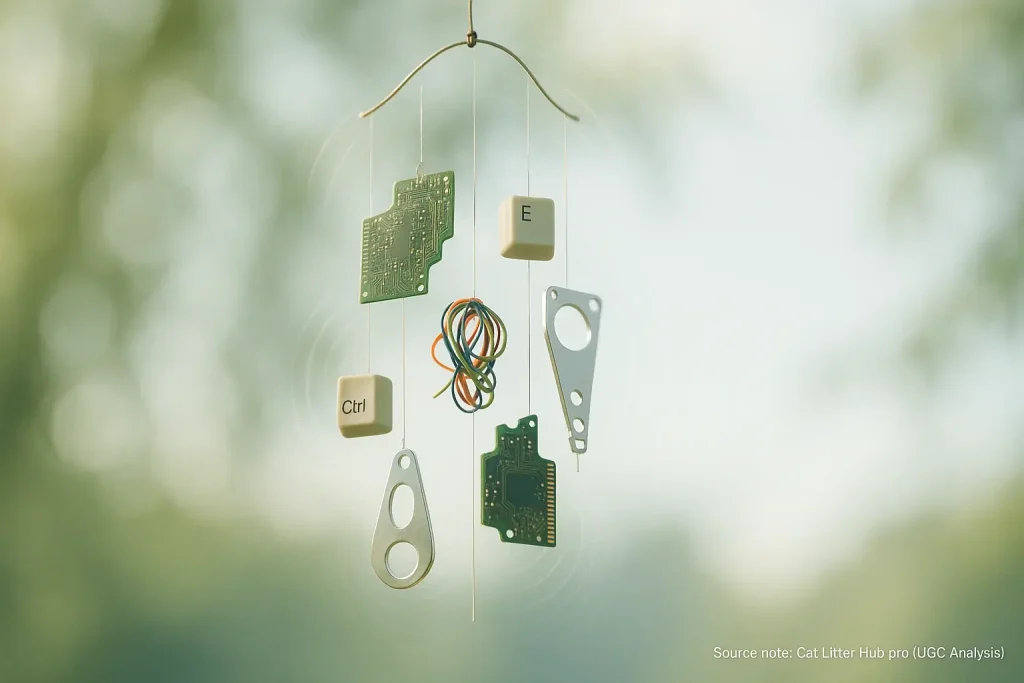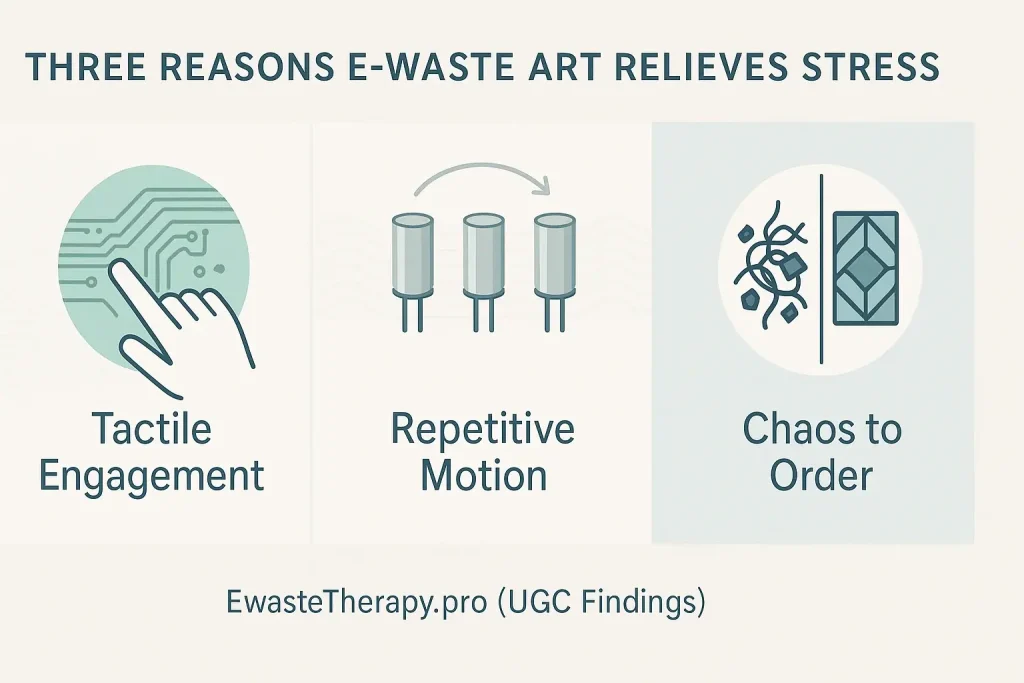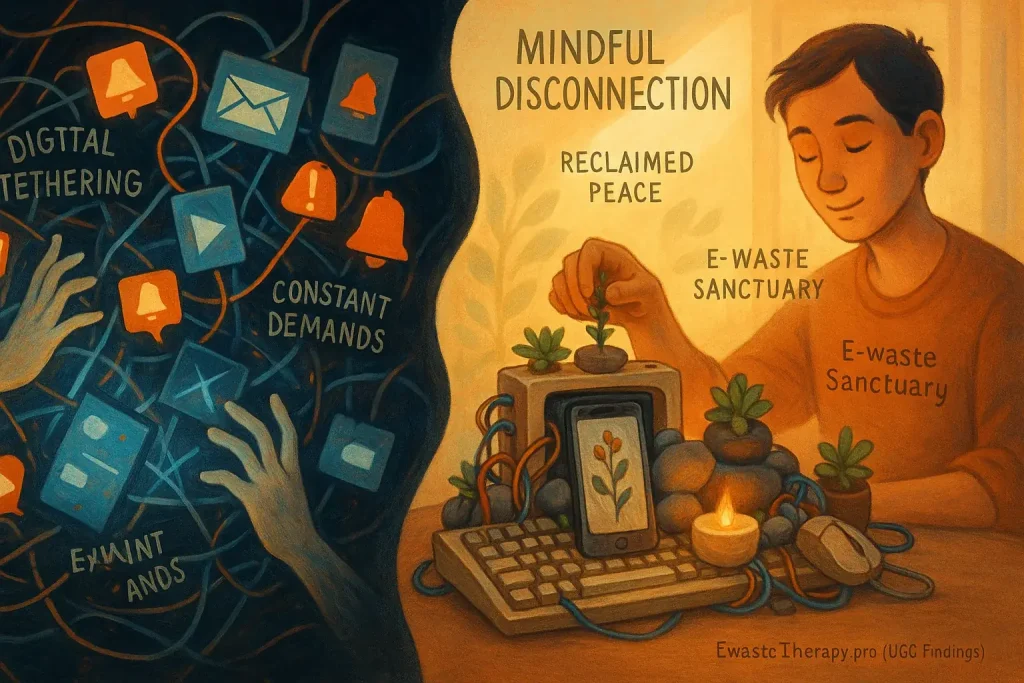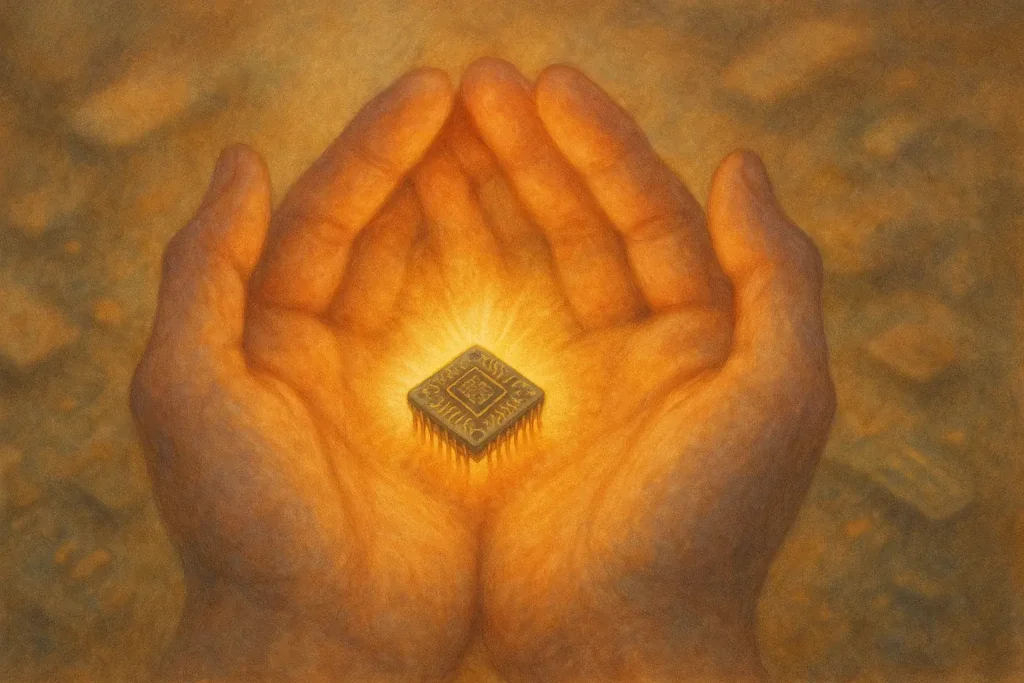Beyond the Broken: The Transformative Power of Repair in E-Waste Art
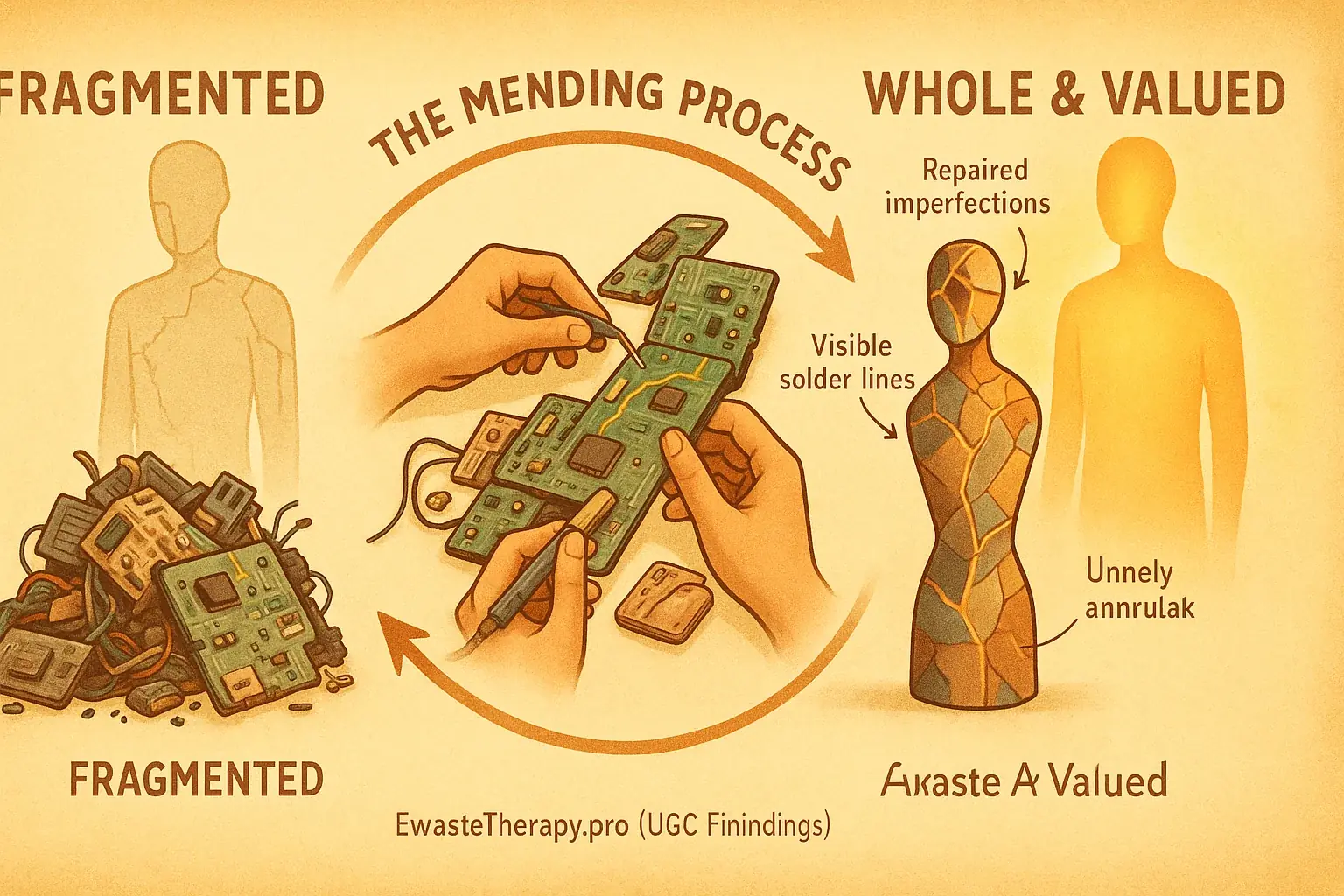
Ever felt life has left you a bit... fragmented? You are not alone. Our analysis of countless user stories reveals an unspoken truth. The act of mending broken e-waste offers a powerful metaphor. It mirrors mending ourselves. The E-Waste Art Repair Principle draws directly from this shared experience, connecting the physical task with deep personal healing.
The world often urges quick replacement. Discard the broken. Yet, many users find deep therapeutic value in the opposite. They pick up the pieces. A surprising pattern emerges from user narratives. The imperfections in a repaired e-waste piece often become its most cherished features. These 'scars' symbolize their own resilience. They tell a story of transformation, a journey from discarded to valued, reflecting an inner shift towards self-acceptance.
So, how does this principle translate into healing? By consciously engaging with the physical act of repair, users often find a parallel process unfolding within their own psyche. Mending a circuit board can feel like reconnecting parts of oneself. This careful work builds focus. It nurtures patience. Ultimately, it can foster a profound sense of inner wholeness and renewed strength. This connection between hand and heart is central to therapeutic tech-art.
The Potent Metaphor of Repair: From Circuit Boards to Self-Healing
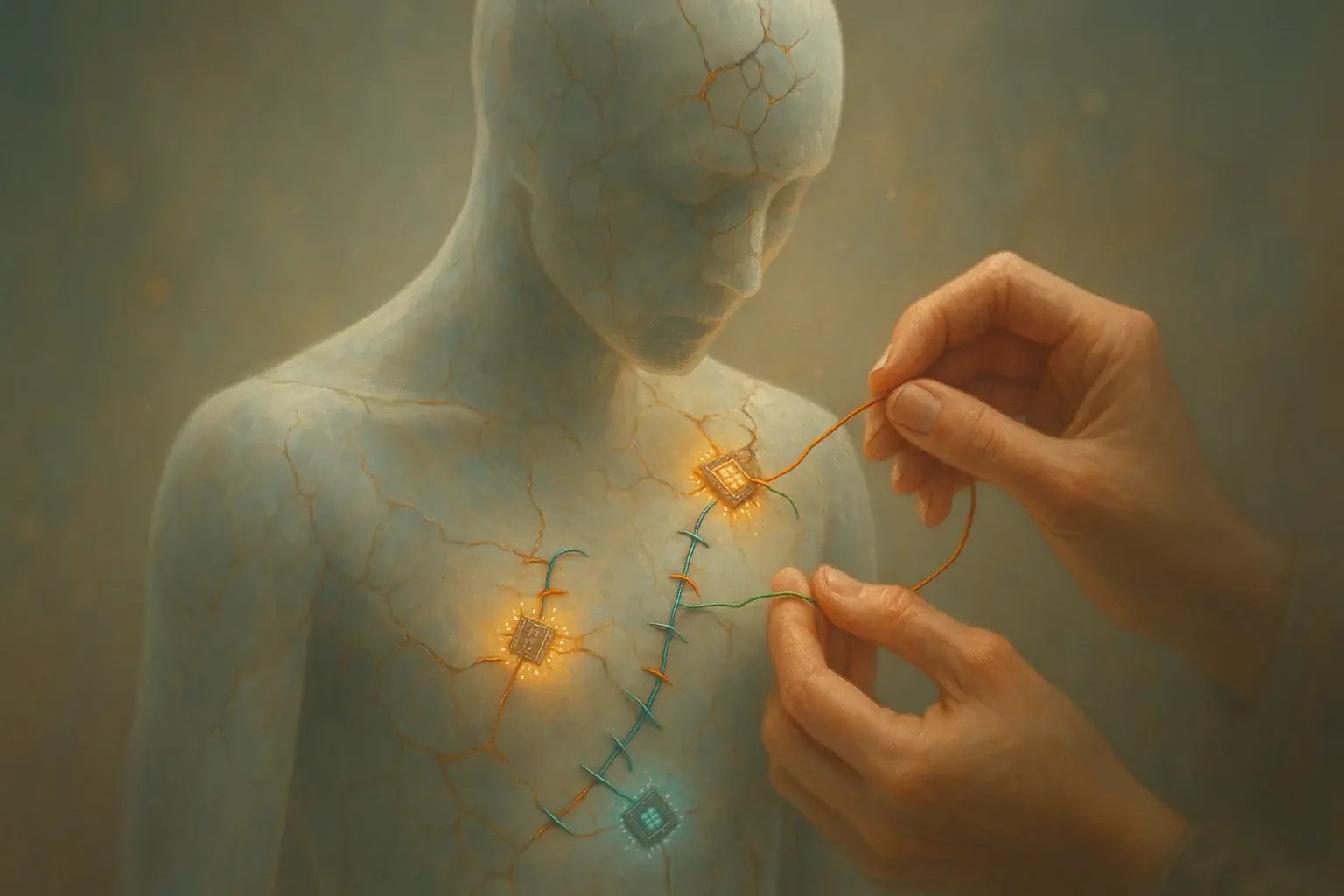
The metaphor of repair is central to e-waste art therapy. Users pick up fractured circuit boards or shattered screens. They see beyond mere discarded objects. These fragments often mirror personal experiences of feeling broken or incomplete. Our analysis of user reflections highlights this initial connection. It is a potent first step towards healing.
The physical act of mending offers a tangible parallel to psychological repair. Imagine meticulously rejoining a small, severed wire. That focused effort, that gentle persistence, directly reflects internal work. Many individuals describe piecing together fragmented e-waste as akin to integrating difficult memories. This process can soothe emotional wounds. Hands engage. The mind begins to heal.
Acknowledging and working with 'brokenness' in e-waste can be profoundly liberating. This insight emerges consistently from user narratives. The process challenges societal ideals of flawless perfection. It fosters a quiet acceptance of one's own imperfections. Here, a truer, more resilient wholeness often begins. This journey with discarded tech mirrors a universal human search for meaning and self-acceptance. This is a powerful, unspoken truth we observe.
Rebuilding from Fragments: Resilience in Every Connection
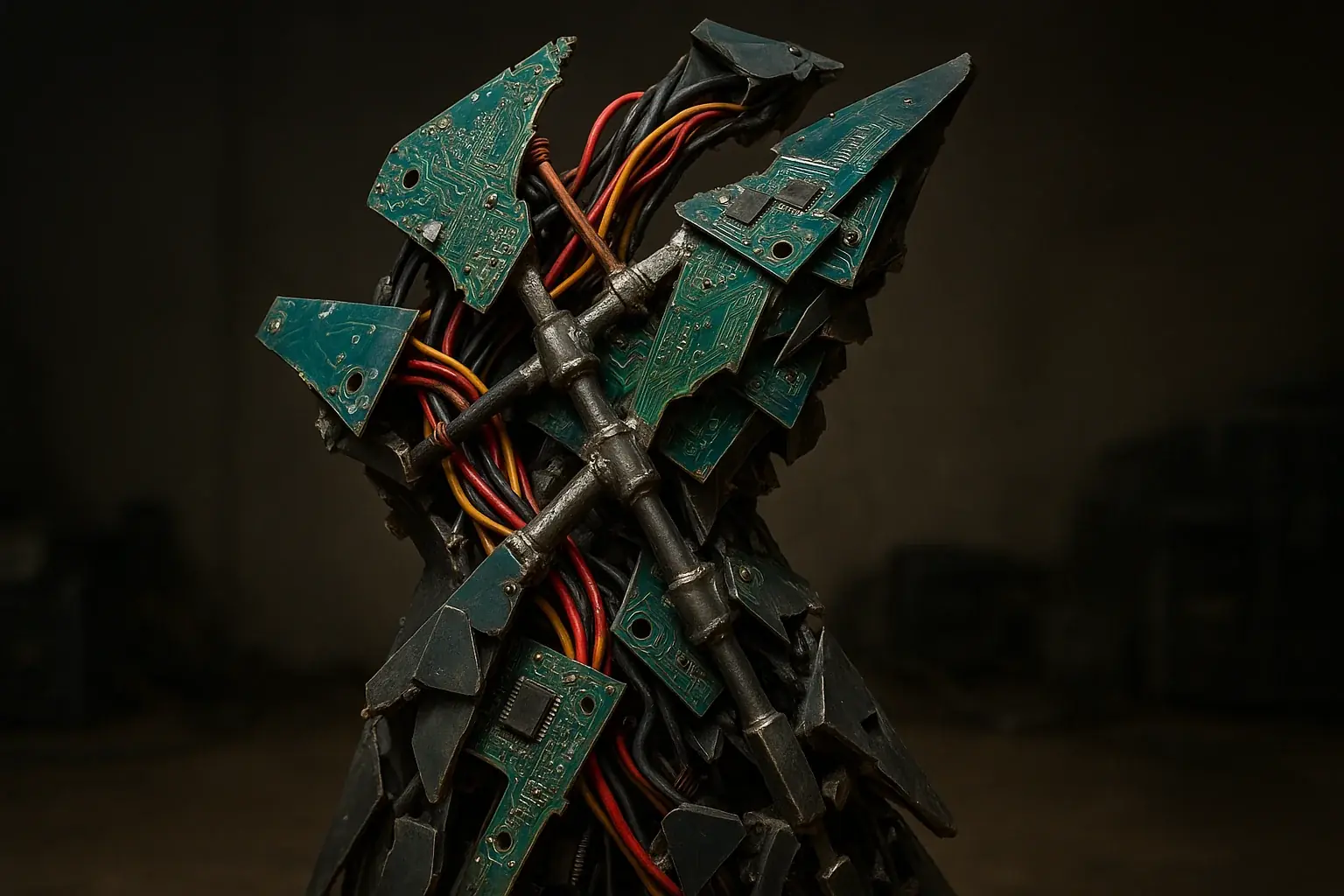
E-waste rebuilding forges new connections. This act surpasses simple reassembly of broken items. Users frequently discover unintended uses for components. This physical problem-solving directly cultivates personal resilience. Your adaptability with materials strengthens everyday coping mechanisms.
Our user experience analysis reveals a common pattern. Many individuals describe a distinct satisfaction. They take seemingly useless e-waste fragments. A broken circuit board, a tangle of old wires. They deliberately transform these into something cohesive. That "I made this work!" feeling? It markedly boosts self-efficacy. This effect is potent when you have felt fragmented yourself.
An unspoken truth emerges from this work. The process of joining disparate e-waste components demands ingenuity. How do you meld brittle plastic with rigid metal? This specific, material-based challenge forces creative problem-solving. This mental workout, our data suggests, strengthens your ability to navigate complex life challenges. The finished art piece stands as tangible proof of your resilience.
Finding Wholeness in Imperfection: The Wabi-Sabi of E-Waste Art
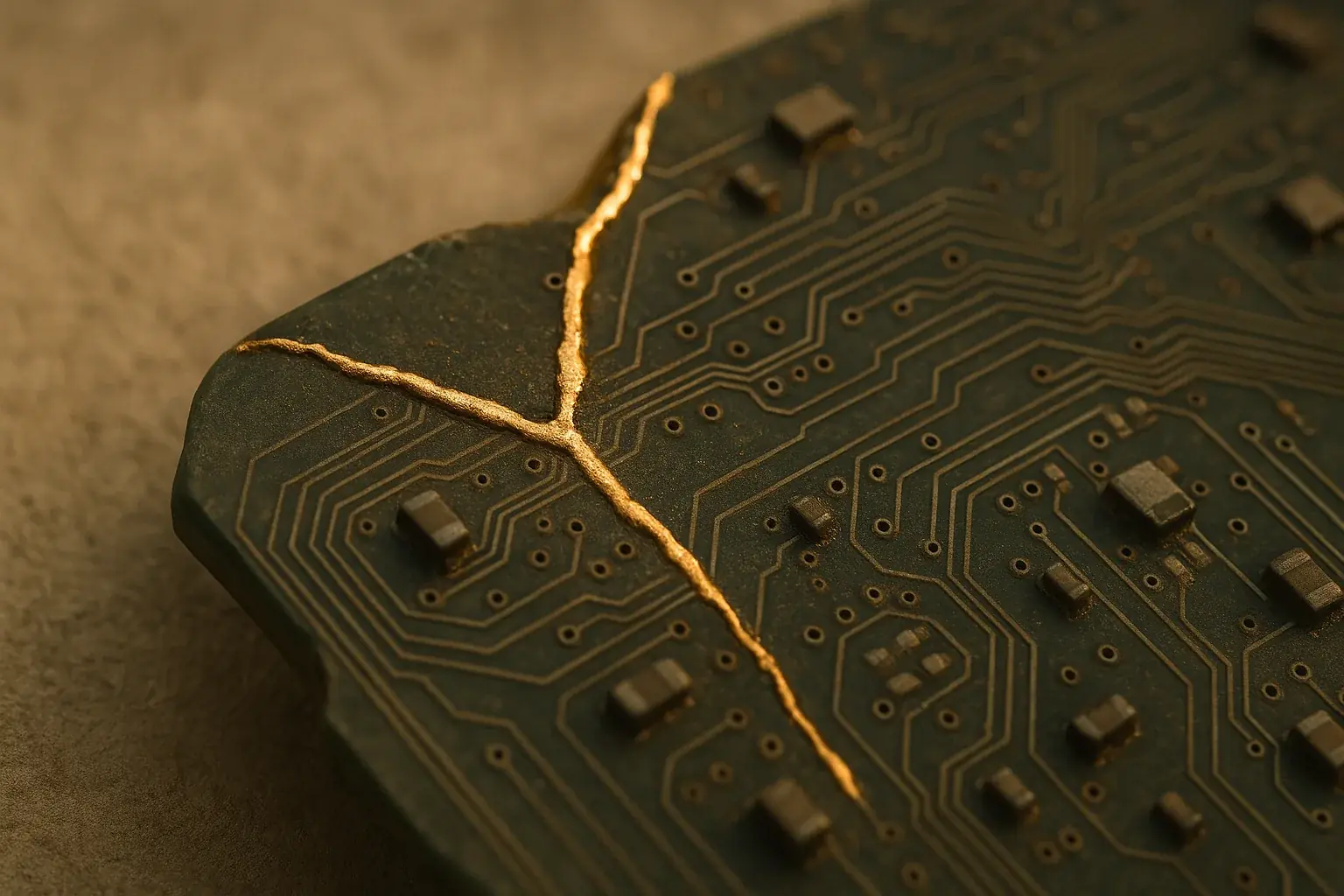
E-waste inherently presents imperfection. Scratches, broken casings, and worn components define its essence. This apparent damage invites a new perspective, not discouragement. EwasteTherapy.pro's analysis of user experiences reveals this directly mirrors the philosophy of Wabi-Sabi. This Japanese aesthetic cherishes the profound beauty found within transient, imperfect, and incomplete things.
This concept powerfully impacts self-acceptance. Think about it: how often do we conceal our own perceived 'cracks' or 'scratches'? E-waste art challenges that tendency. When you transform a chipped circuit board into something beautiful, you practice radical acceptance for your own unique journey. Users frequently report a significant internal shift; working with 'imperfect' e-waste became a potent tool for them to embrace their past experiences, even difficult ones, as integral parts of their evolving story.
The material itself teaches. An unexpectedly bent piece of metal or a fragmented plastic casing might resist your initial artistic plan. This resistance fosters creative problem-solving. You adapt. You innovate. The final artwork, born from navigating these material limitations, often becomes more deeply personal and authentic, mirroring how life's 'flaws' can lead to our most unique strengths and creative breakthroughs.
Restoring Function & Meaning: From Discarded Tech to New Purpose

Discarded technology once held clear purpose. Computers calculated. Phones connected. Now, these items are 'dead tech.' E-waste art therapy offers these components a second life. You assign them fresh meaning. This transformation is profoundly symbolic. It speaks directly to our human capacity for renewal.
Have you felt a past part of you was discarded? An old skill. A forgotten talent. Perhaps a past relationship lost its purpose. E-waste art therapy provides a unique way to symbolically reclaim these aspects. Giving a fractured motherboard a new role in your creation explores this. You learn to find new meaning in your own seemingly 'obsolete' experiences. Users often share profound shifts. One individual, for instance, took old hard drive platters. These platters, previously data keepers, became a 'mirror.' This piece powerfully reflected her hard-won clarity following a significant life transition.
Profound meaning often emerges from stark contrasts. This occurs when a component's new artistic purpose directly opposes its original function. Consider a small cooling fan. It once prevented a CPU from overheating. In your art, it might represent calming emotional overwhelm. It could even symbolize the gentle breeze of new perspectives. Such unexpected shifts in purpose unlock surprisingly deep personal insights. EwasteTherapy.pro's research shows these are pivotal moments for many.
Your Journey to Wholeness: Embracing Repair Through E-Waste Art

Discarded technology offers a profound mirror. Repairing these items physically can help mend parts of yourself. This journey transcends simple art creation. It becomes an accessible, powerful path toward inner wholeness. Our analysis shows many individuals discover this surprising, transformative connection through their work.
EwasteTherapy.pro guides this unique practice. Our methodology prioritizes your safety. It grounds creative expression in proven therapeutic principles. You learn to find deep meaning within these often-overlooked materials. This process transforms discarded electronics; it also reshapes your inner landscape. Ready to pick up the pieces and create something truly meaningful, both externally and within yourself? Your journey to wholeness begins here.
Related Insight: Mosaics from Broken Phone Screens: Piecing Together New Wholeness
Shattered phone screens hold profound symbolic power. Our collective user experiences at EwasteTherapy.pro reveal a compelling draw to these fractured artifacts. People find transforming them into mosaics deeply resonant.
Imagine piecing together these broken elements. This creative act often helps individuals mend perceived shattered realities. Explore how creating powerful mosaics from broken phone screens can build new wholeness, reflecting the beauty of mending.
Related Insight: The Repair Culture Mindset: How E-Waste Art Therapy Fosters Resilience & Resourcefulness
E-waste art frequently starts with a simple act: repair. Our extensive review of user-generated content shows this mending of discarded tech cultivates a profound internal shift. This shift forms the bedrock of a true repair culture mindset.
This mindset, as many discover, extends far beyond any single art project. It actively fosters personal resilience. It builds practical resourcefulness for navigating daily life. The interesting part? This approach transforms not just objects, but your entire outlook on challenges.
